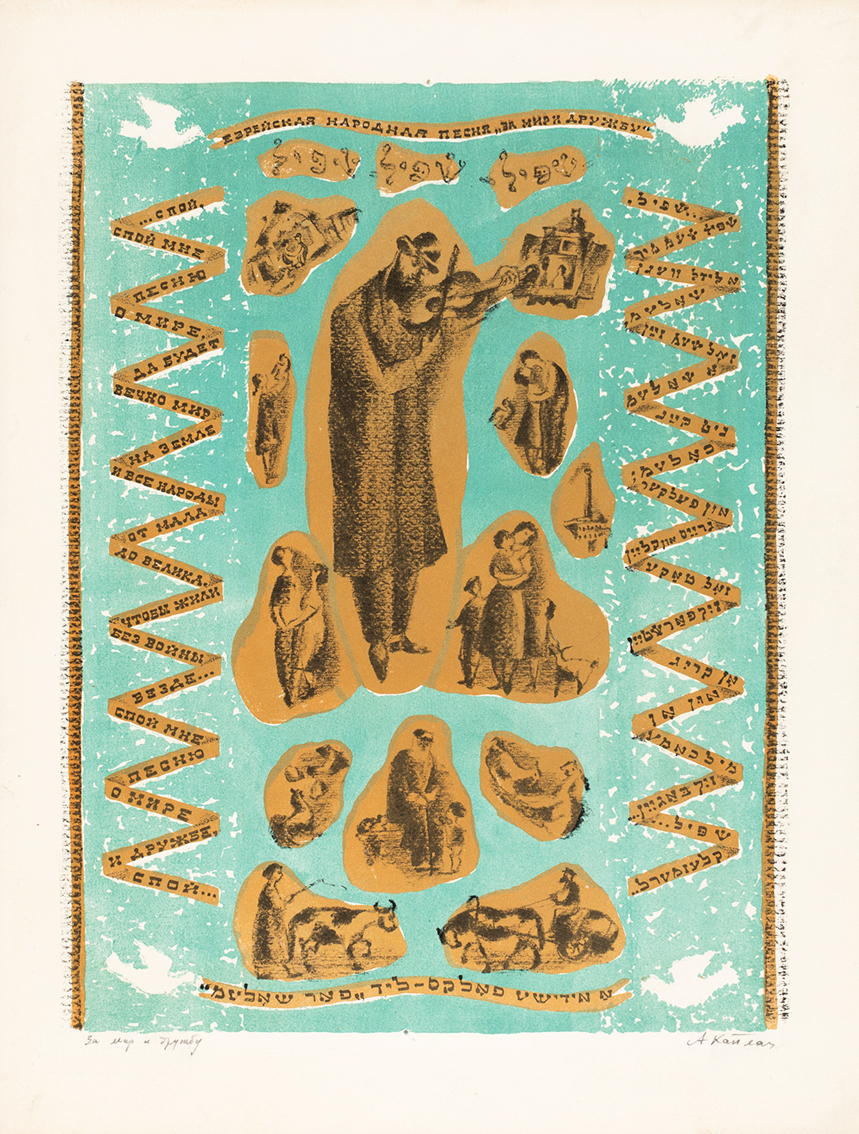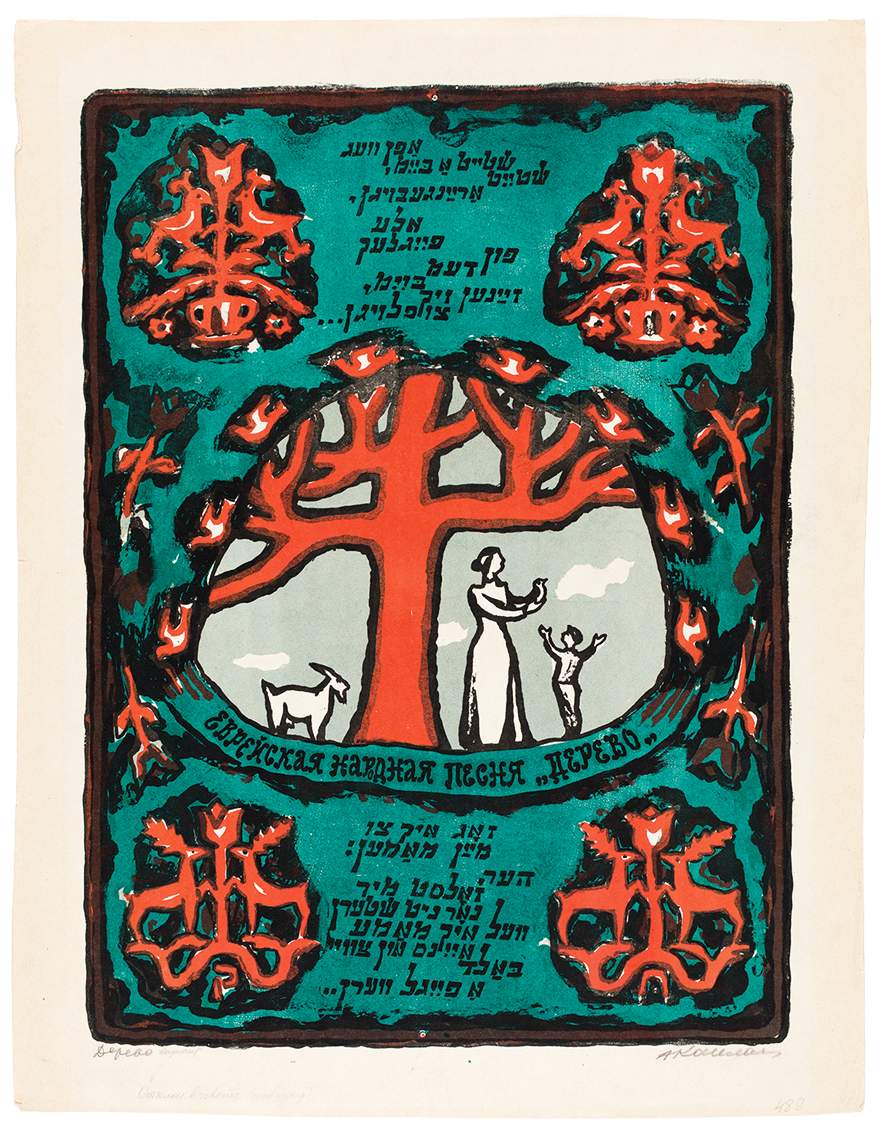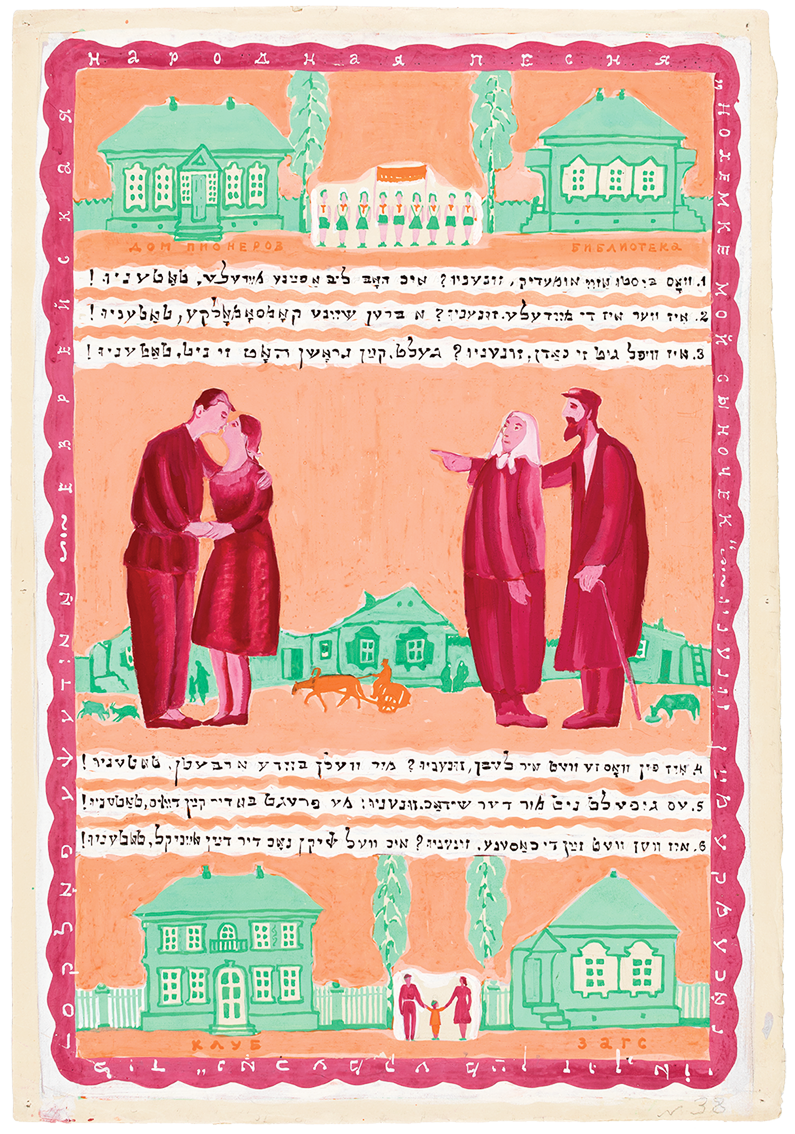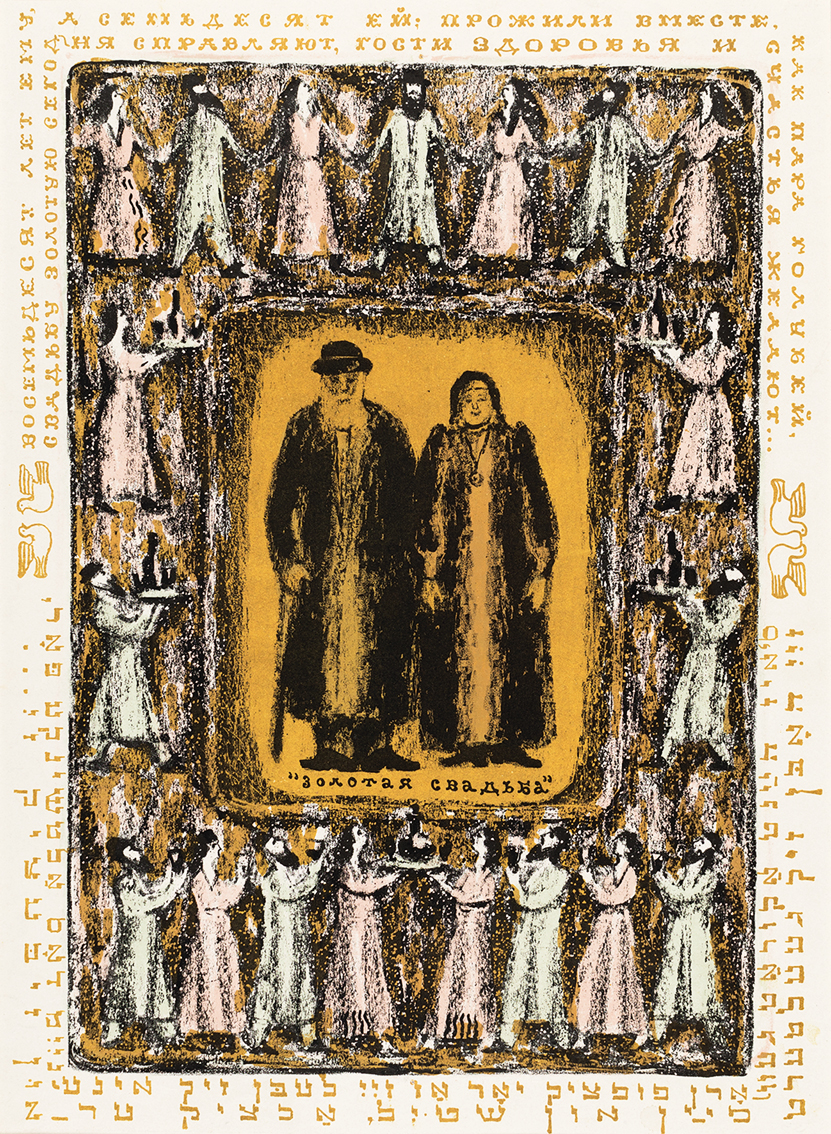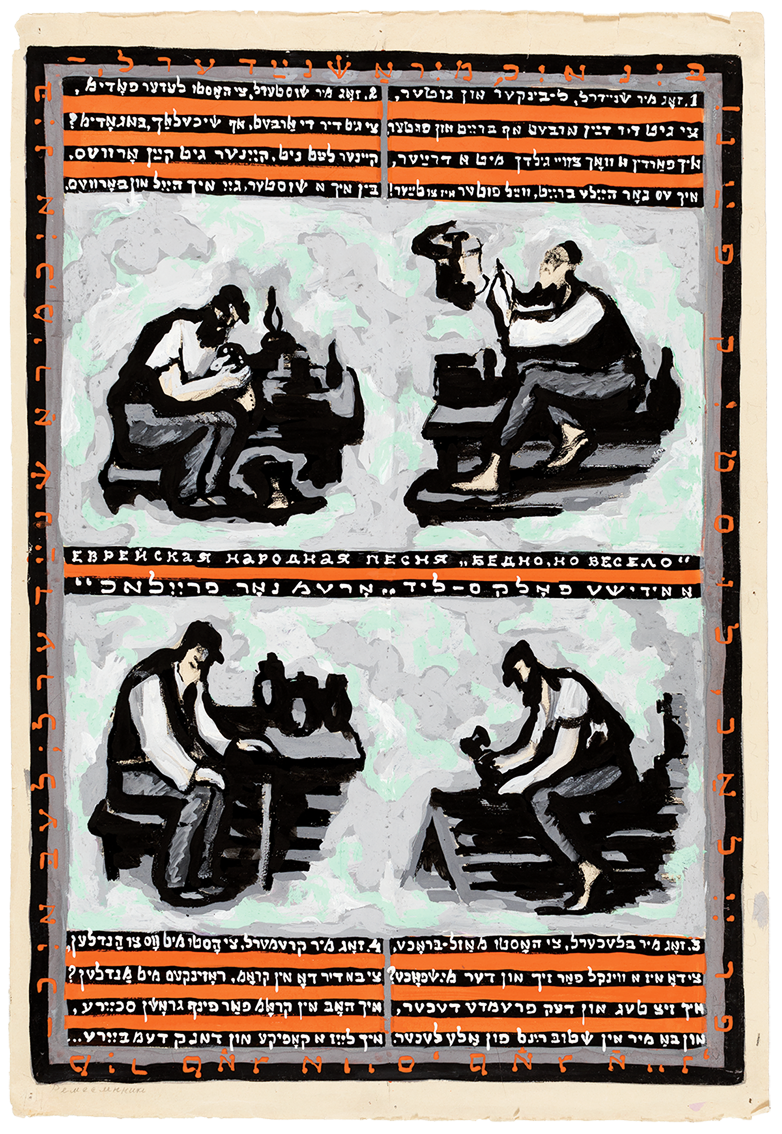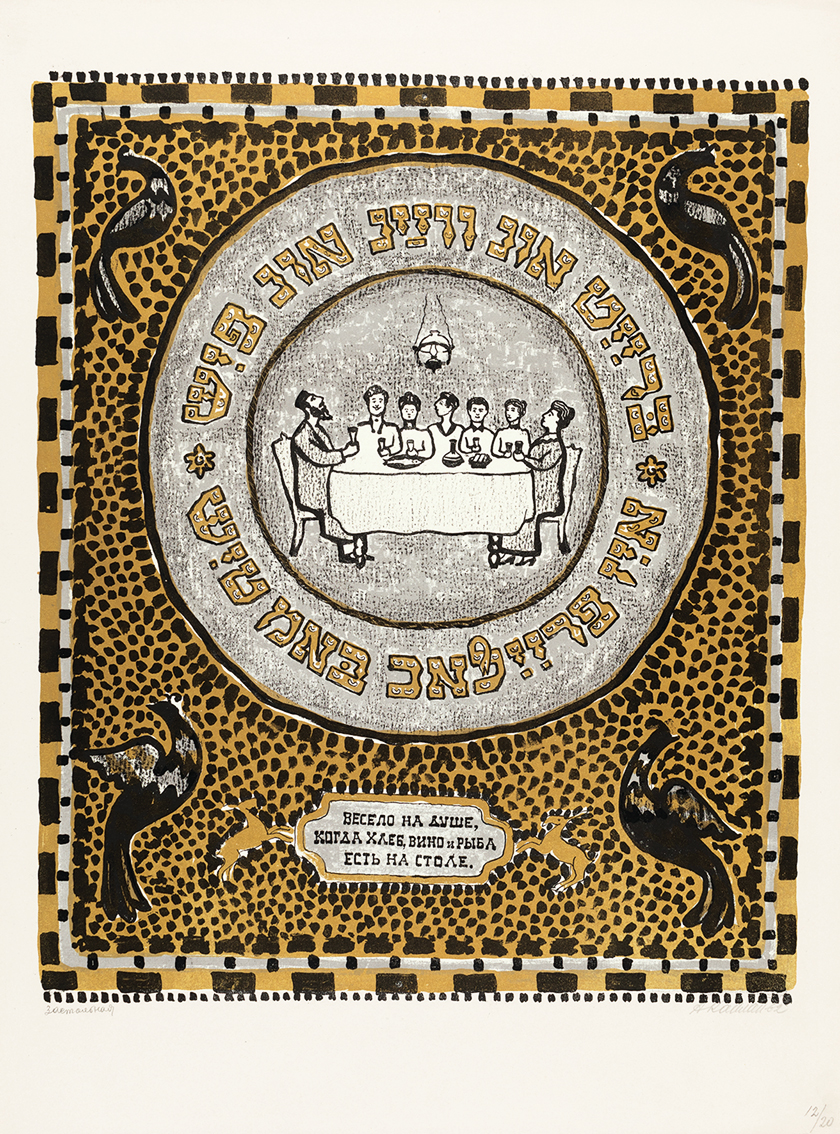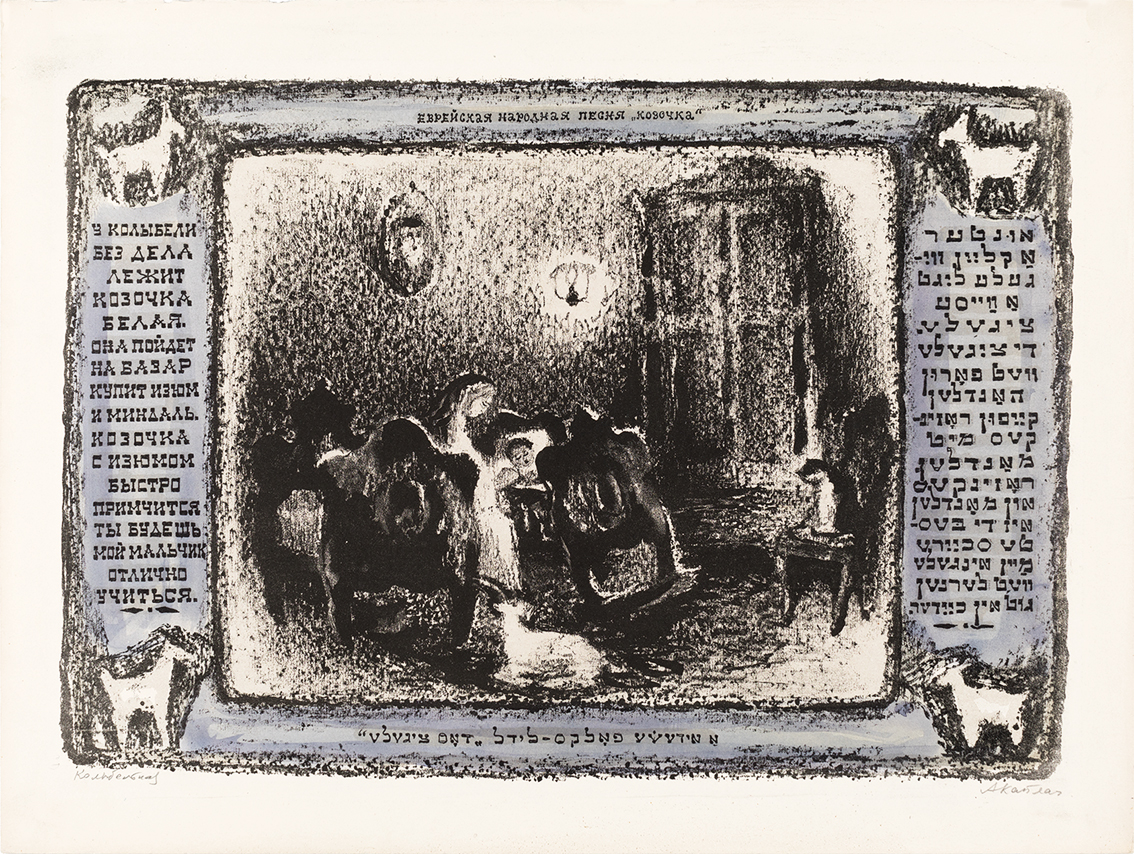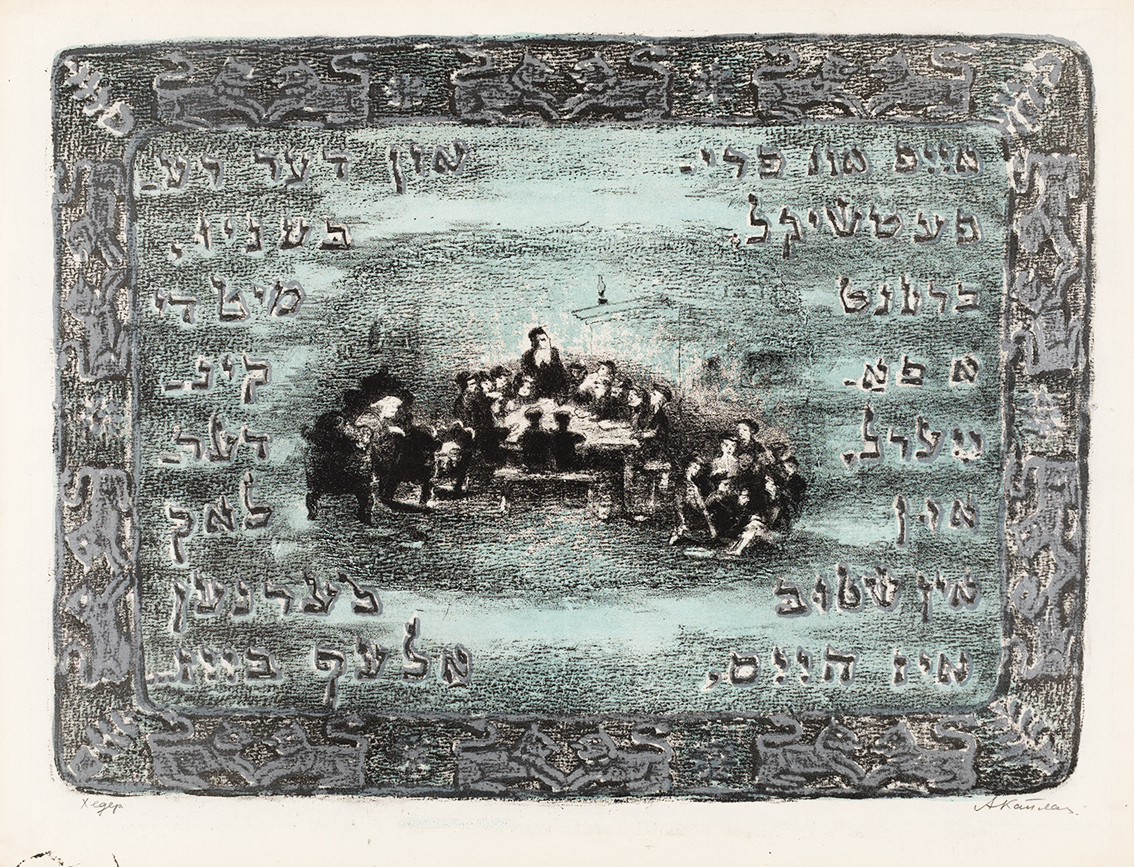Living Between Worlds
The Yiddish folk song Nakhumke My Son that Kaplan chose to paint as part of his Jewish Folk Songs series describes a conversation between a father and his son Nakhumke (another version of the song’s name is איך האב ליב א מיידל – I Love a Girl).
The song revolves around Nachumke’s announcement that he has fallen in love with a girl who has no dowry. The father rejects his son’s decision, but Nackumke tries to assuage his disappointed father by telling him that a grandson is also born of this union, perhaps intimating that the marriage will ensure the father’s lineage.
Kaplan depicts this seemingly strange song by dividing the painting into five parts. In the middle, he shows the young couple kissing, with Nakhumke’s father pointing at them, Nakhumke’s mother by his side. The young and the old couples stand on opposite sides of the painting, with everything in between them drawn in the red color of the Soviet flag. The young lovers are dressed in modern clothes, while the parents appear as a traditional shtetl couple, the father with a cap on his head, the mother’s head covered with a kerchief tied in a knot under her chin. Behind them, in green, Kaplan draws the wooden houses of Rogachov, animals wandering about and a Jew driving a horse-drawn wagon. At the top of the painting, also in green, Kaplan draws two brick buildings – a House of Pioneers and a library. In between, young boys and girls are gathered, all with red ties around their necks which identify them as young communist pioneers. Above them, a banner is drawn up like the ones typically used for communist slogans. In the bottom part of the painting, two more brick buildings appear. The one on the left is a cultural club, and on the right is the building where births, marriages, and deaths are registered. In between, Nakhumke, his beloved, and their young son appear again, all holding hands. Kaplan separates the top, middle and bottom parts of the painting with the Yiddish stanzas of the original folk song.
In this one painting, Kaplan depicts the entire struggle of traditional shtetl life in contrast with the Communist ethos and its promise of modernity. The top and the bottom parts of the painting depict the new opportunities brought on by modernism and communism, with the child in the middle symbolizing the future. The old traditionalist father pointing at the young son may either be interpreted as an accusation of leaving the traditional life behind, or, alternatively, as pointing to the young couple as a sign of direction, toward the promised future.
The painting is a tour de force that reflects the difficult times Kaplan lived in, issues that he explored in many of his other multi-layered works of this period.
